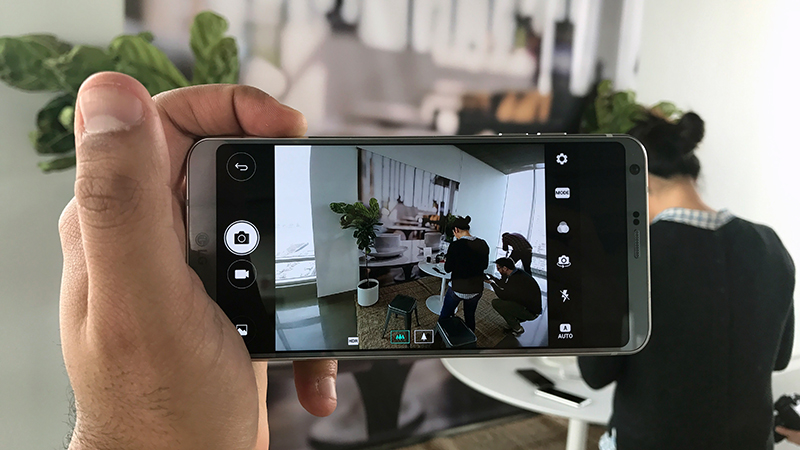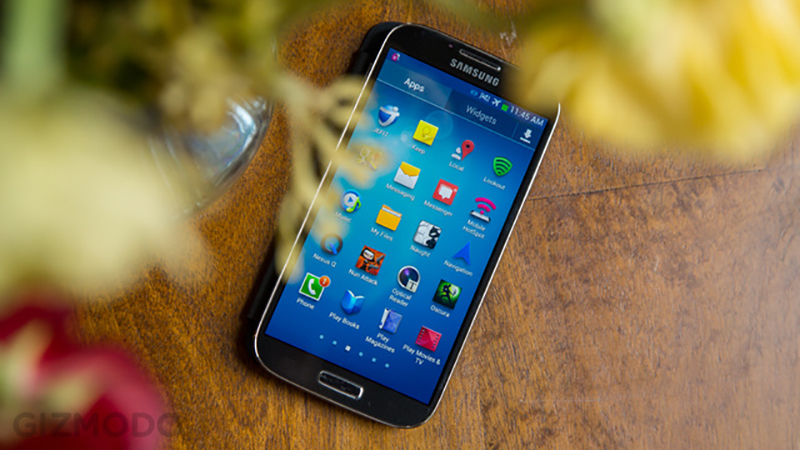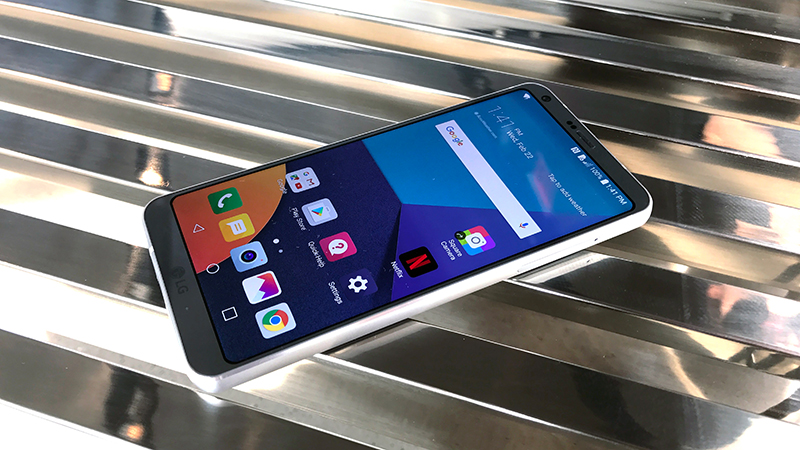Most of the major smartphones of spring have been announced, and we noticed something curious. The LG G6 and Samsung Galaxy S8 are both rocking big displays with an aspect ratio larger than the 16:9 you’re used to on your phones, television and desktop displays. These phones have some of the widest aspect ratios ever seen on a mobile device. Is this the future of our smartphones or just another fad (like modular handsets)?
We’ll guide you through the ins and outs of aspect ratios and explain why the 18:9 display is one to watch out for in the future.
What aspect ratio is, and why you should care

The 3:2 Samsung Galaxy Tab S3. (Image: Alex Cranz/Gizmodo)
Aspect ratio is the relationship between the height and width of a rectangular display. Your laptop has one, your tablet has one, and your smartphone has one — it’s a measurement of how tall or wide a screen is.
You’ll usually see it expressed as a ratio, like the 4:3 ratio on older TVs, or the widescreen 16:9 ratio on new ones. It’s also sometimes written as a decimal with the larger figure divided by the smaller (4:3 is 1.33 and 16:9 is 1.78). It doesn’t tell you how big a screen is, just the proportional relationship between the height and the width, so on a 16:9 screen there will always be 16 pixels in one direction for every 9 pixels in the other.
Of course this makes a pretty big difference to your user experience, as you’ll know if you’ve ever tried to watch a widescreen movie on an ancient TV and seen the screen get swallowed up by huge black bars at the top and bottom.

The 18:9 LG G6. (Image: Michael Nunez/Gizmodo)
For just about any gadget, from a television to a Image: Brian Barrett/Gizmodo
The launch of the first iPhone is a good a starting point as any when it comes to charting smartphone history, and that particular device arrived with a screen resolution of just 480 x 320 pixels — that’s an aspect ratio of 3:2, which you’d be hard pushed to find on a phone today, but which is now showing up on 2-in-1s like the Samsung Chromebook Pro and the Surface Pro 4 from Microsoft.
Even as Apple upped the resolution of the iPhone, the aspect ratio stayed the same, until the iPhone 5 in 2012, which featured a 1,136 x 640 pixel, 16:9 screen for all your widescreen movie and gaming needs. Both the latest models have more pixels but that same 16:9 aspect ratio.
Outside of Apple, the trajectory is less easy to track, but it follows a similar pattern. You might not be surprised to hear that Samsung went 16:9 the same year Apple did, with the Galaxy Nexus, after the first two models opted for an older 1.66:1 standard.

The first 16:9 Samsung phone. (Image: Brent Rose/Gizmodo)
There have been too many phones launched since 2007 to mention them all individually, but the broad trend has been towards widescreen, 16:9 aspect ratios since the turn of the decade, first at 1,920 x 1,080 pixels (Full HD) and then at 2,560 x 1,440 pixels (Quad HD).
At least part of the reason for that has been video: while TV and cinema have used widescreen formats for decades, it was only really at the turn of the 2010s that we started watching this kind of content on our phones (YouTube went widescreen in 2009), and so 16:9 makes sense to keep those letterboxing effects to a minimum.
The next logical step would be to follow TV sets into the realm of 4K — and the same 16:9 aspect ratio — but that’s not necessarily a given. Cinema and television formats could be on the verge of another serious shift, and that in turn might mean that 18:9 is going to be the future of our smartphones.
The LG G6 and super-tall phones

Image: Michael Nunez/Gizmodo
LG kicked off 2017 with the launch of its unusually tall, 18:9 aspect ratio LG G6, running at a resolution of 2,880 x 1,440 pixels, and the Samsung Galaxy S8 was announced this week offering a slightly larger 18:5 2960 x 1440 display. Besides bezels almost completely disappearing, what’s going on?
Part of the thinking, as LG has openly explained, is to do with the proposed Univisium 2:1 format put forward by Italian cinematographer Vittorio Storaro. It’s not been broadly accepted as yet, but it’s designed to find a happy compromise between the competing widescreen aspect ratios of television (typically 16:9) and movie theatres (typically a wider 2.20:1). It was first suggested in 1998, but Univisium is now starting to gather momentum — new shows on Amazon Video and Netflix have already been shot using this aspect ratio (or very close to it).
That’s video covered, but it also makes more sense for multitasking with apps on bigger screens. With an 18:9 aspect ration you can have one app on top of another in portrait mode or use them side-by-side in landscape mode. There’s also more to see on webpages and in those ubiquitous endless-scrolling apps where the content never stops, like Twitter and Tumblr.

Stranger Things was shot in the new 18:9 aspect ratio. (Image: Netflix)
Right now it’s just too early to say whether 18:9 will take off, but if LG and Samsung commit themselves to the standard then it’s got a great chance of getting a foothold in the market. Getting the entertainment industries to switch over may well be a longer process, but existing video formats still look fine on a 18:9 screen.
As noted in our LG G6 review that extra height (or width, depending on how you’re holding it) is something you quickly get used to. LG has been pretty clever with how it’s used the extra space, one example being the way your most recent shots stack up at the side of the shutter window in the camera app.
With two of the most popular smartphone makers leaning into this super aspect ratio this year there’s a good chance 18:9 could be the new trend in smartphone displays — particularly those found on Android devices. But Apple and Google still have to announce their new phones in the fall. Which means these super wide phones might still just be a super fad.
